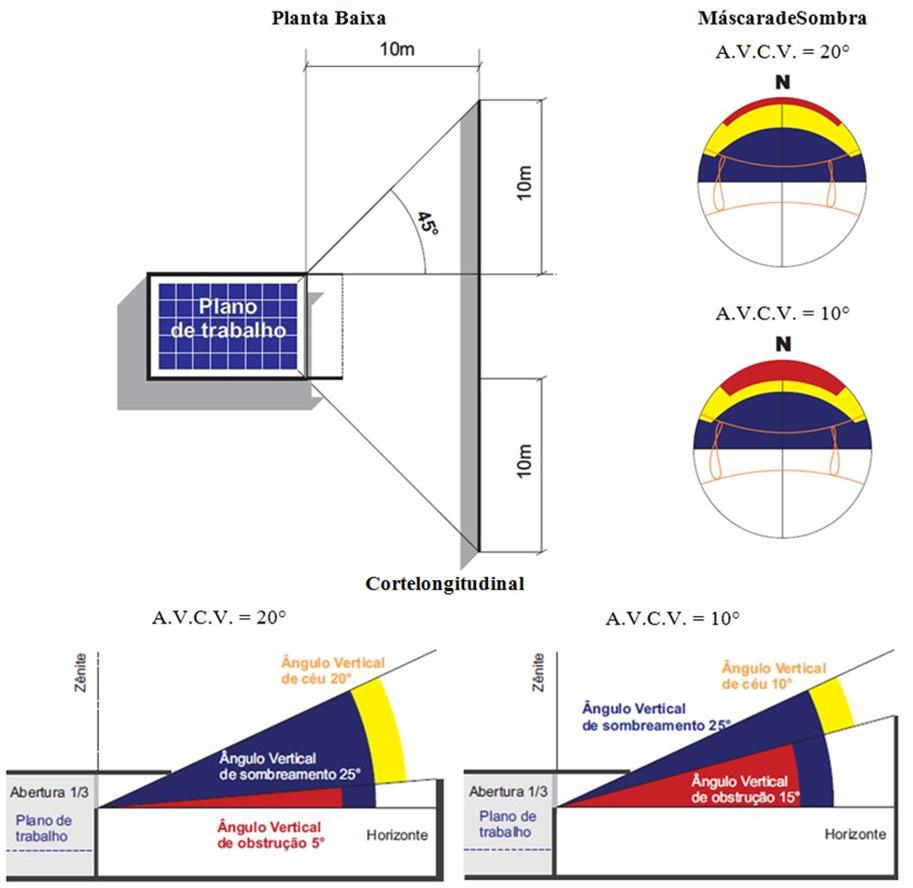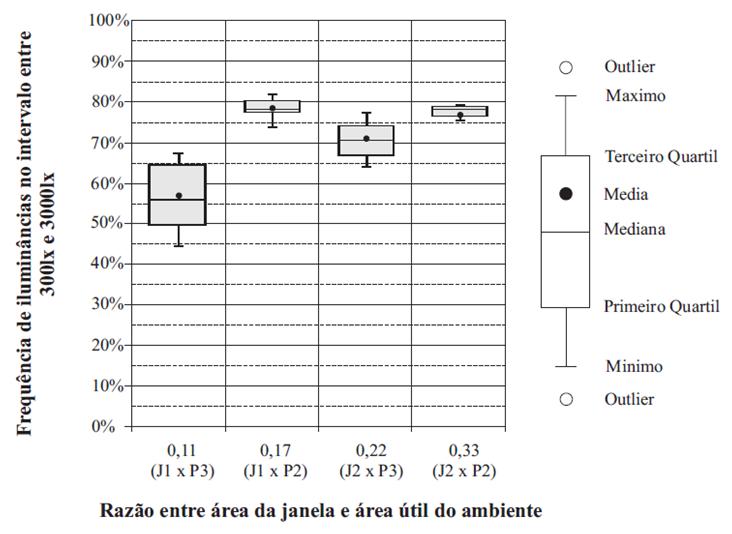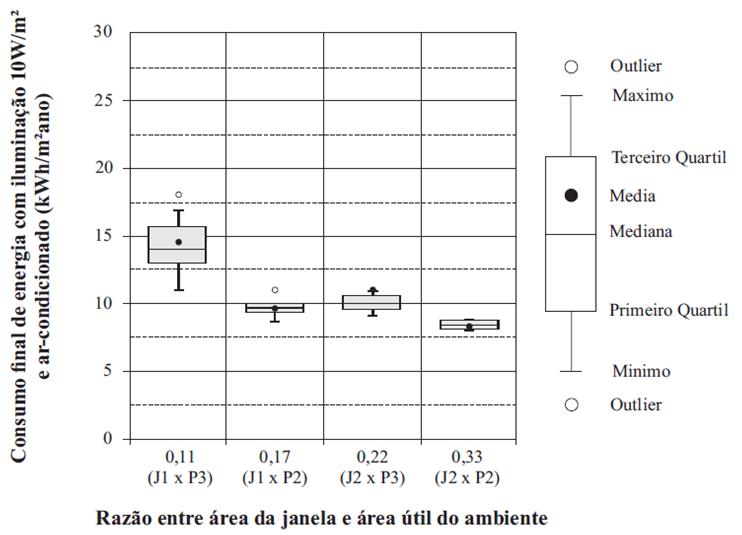Abstract
This study aimed to identify the window to floor ratio associated with effective daylighting and energy efficiency in the humid tropics. The rule of thumb most used by architects in preliminary design stages, aiming at adequate natural lighting, addresses window area and room depth. Brazilian building codes determine window to floor ratio values to ensure better natural lighting conditions, but those ratios are not based on scientific works. The method of this study consisted of a comparative analysis of the performance of models regarding useful daylight, daylight uniformity, daylight glare, and energy consumption with lighting and cooling,in order to compare the window to floor ratios under a shaded window, air conditioning, and hybrid lighting. The Daysim and DesignBuilder tools simulated illuminances and energy consumption. Data analysis compared the range of variation in the performance of groups of models, classified by four window-to-floor ratios. The results validated the effectiveness of the 1/6 ratio, but not the 1/8 ratio, both required by Brazilian building codes. The results showed the effectiveness of the 2/6 and 2/8 ratios, which are not included in the codes of cities with hot and humid climates.
Keywords:
Daylight; Shading devices; Humid tropics; Window size; Room depth

 Thumbnail
Thumbnail
 Thumbnail
Thumbnail
 Thumbnail
Thumbnail
 Thumbnail
Thumbnail
 Thumbnail
Thumbnail
 Thumbnail
Thumbnail
 Thumbnail
Thumbnail
 Thumbnail
Thumbnail
 Thumbnail
Thumbnail
 Thumbnail
Thumbnail
 Thumbnail
Thumbnail
 Thumbnail
Thumbnail
 Thumbnail
Thumbnail
 Fonte: dados climáticos da base U.S.DOE/Weather (
Fonte: dados climáticos da base U.S.DOE/Weather (










